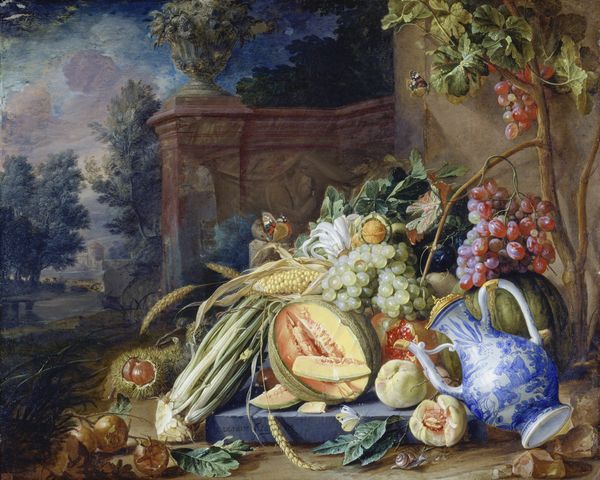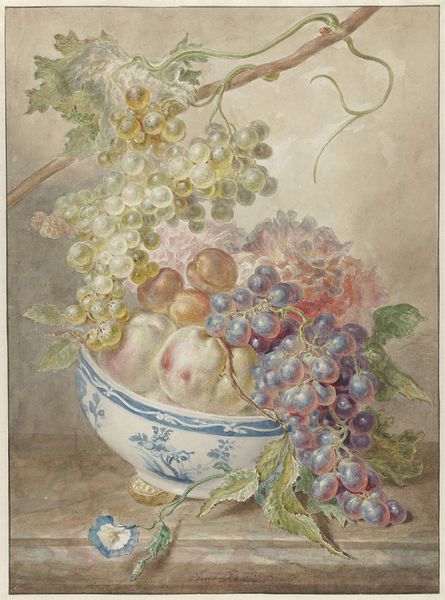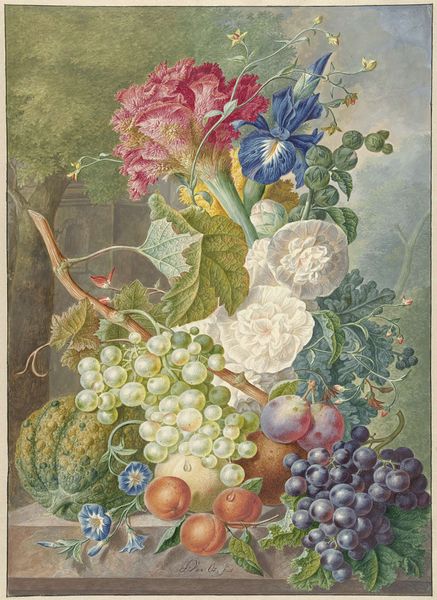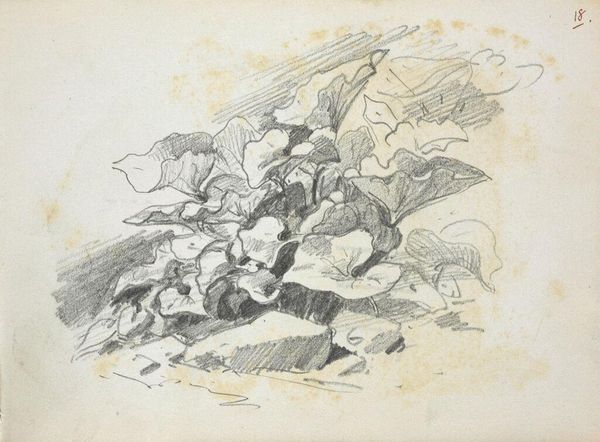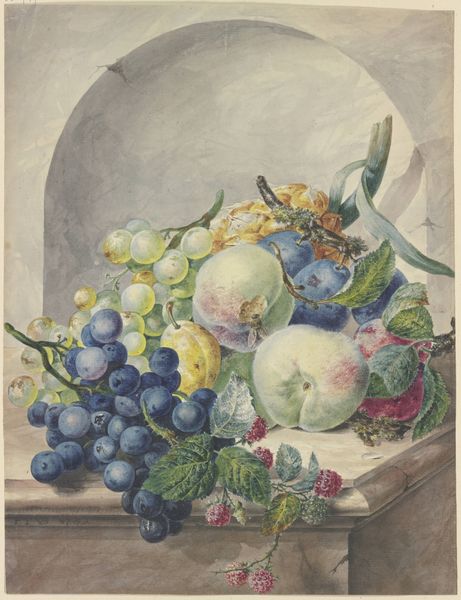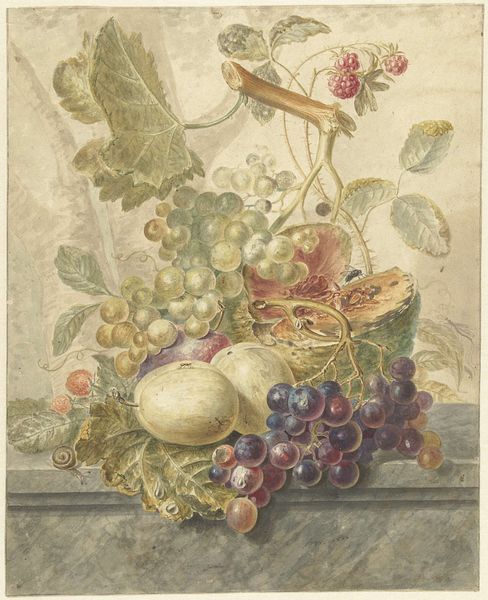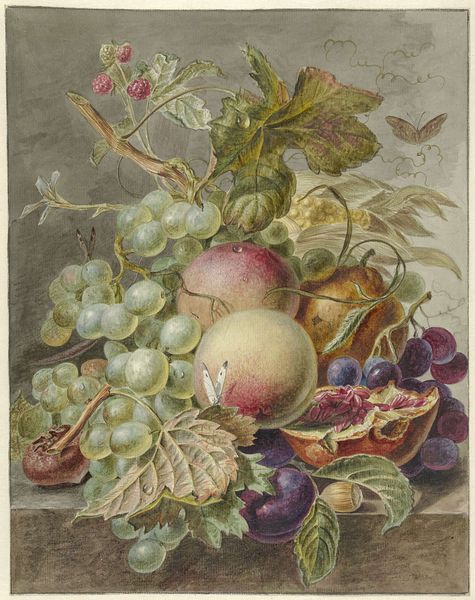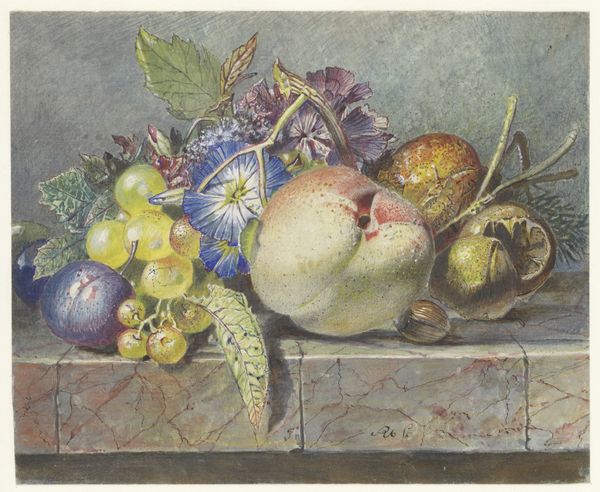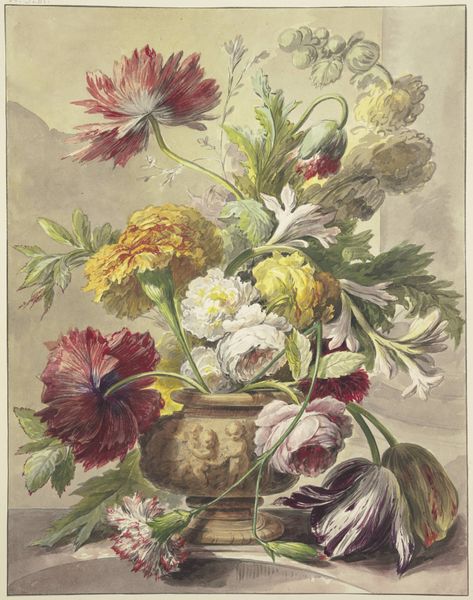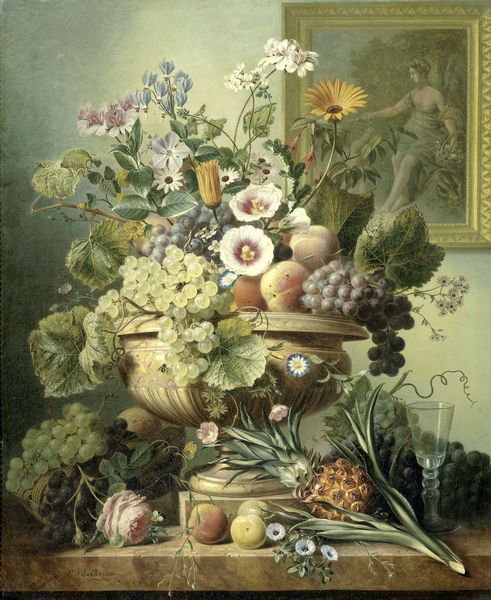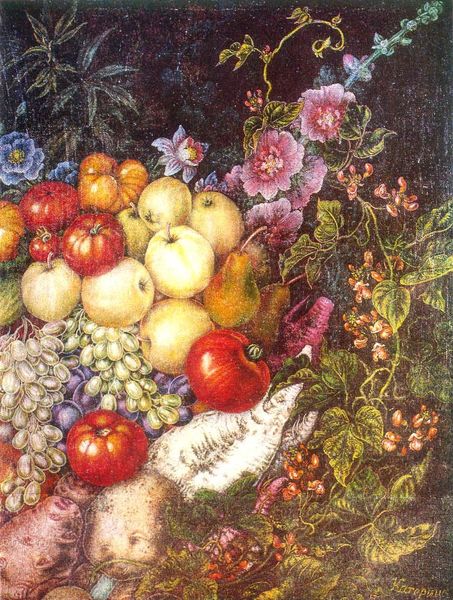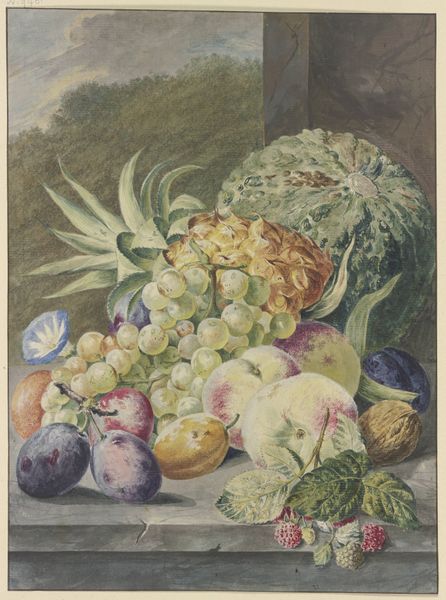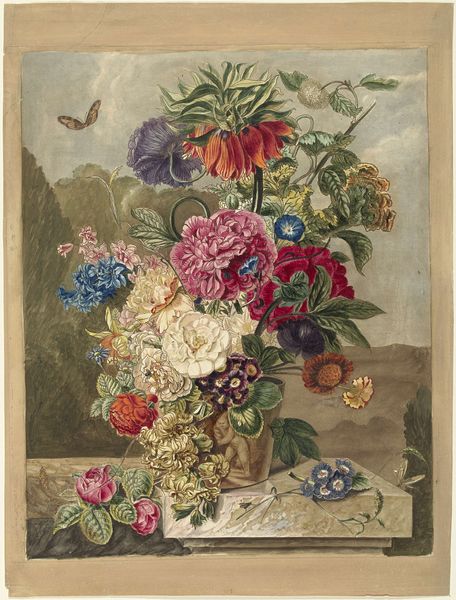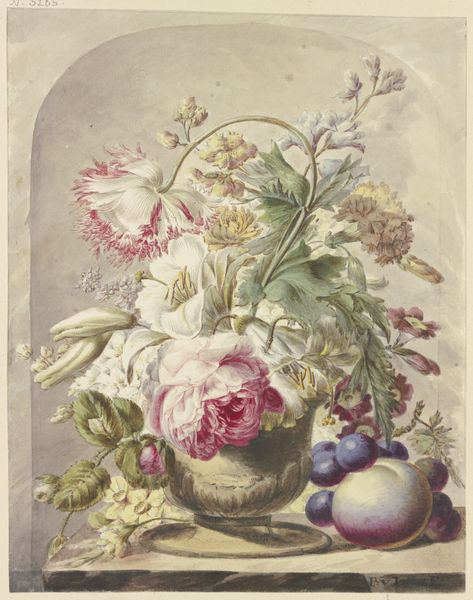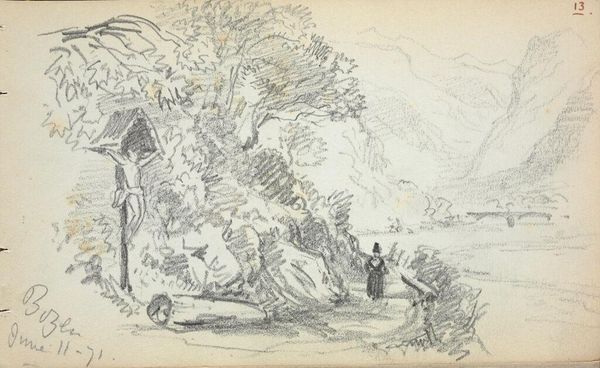
gouache, plein-air, watercolor
#
gouache
#
gouache
#
plein-air
#
landscape
#
watercolor
#
romanticism
#
watercolour illustration
#
genre-painting
#
watercolor
Copyright: Public domain
Editor: David Cox's "Still Life. Basket, Foxgloves, Clothes and Other Objects," painted in 1823 with watercolor and gouache, has such a peaceful and ordinary feel. The scene is so naturally composed, I'm curious, how do you read a work like this within its historical moment? Curator: It's fascinating to consider the role of genre painting during this period. Early 19th-century Britain was experiencing rapid social change. Genre paintings like this offered a seemingly unmediated glimpse into everyday life, grounding viewers in a familiar, often idealized, reality. Think about the rise of the middle class, and how images reflecting domesticity resonated. Do you see it celebrating simple virtues? Editor: I suppose the focus on commonplace objects could suggest that, the domestic work and plain setting feel true to life but could also romanticize the simple life, don't you think? Curator: Precisely. Artists like Cox played a significant role in constructing notions of "Britishness." The careful observation of nature—the foxgloves, for example—alongside the domestic objects, reinforced ideas of a close connection to the land and a virtuous national character. But this idealized version often obscures social realities. Where are the people? Editor: That’s a good question. Their absence almost implies that they *are* the intended audience; those for whom this scene would be an accessible piece of sentimentality? Curator: Exactly! Cox navigates between accuracy and a certain poetic vision that suited both aristocratic patrons and a burgeoning middle class seeking images reflective of their social aspirations. What do you make of the loose brushwork, typical of Romanticism, contrasting with such ordinary items? Editor: That's something I didn't think about: a tension between realistic still life and then those loose brushstrokes... It sounds like this wasn't just a quiet picture, but a reflection of the public's understanding of themselves and Britain. Curator: Precisely. Considering the image's historical positioning alongside it's formal aspects enables us to uncover complex narratives woven into even seemingly simple compositions.
Comments
No comments
Be the first to comment and join the conversation on the ultimate creative platform.
